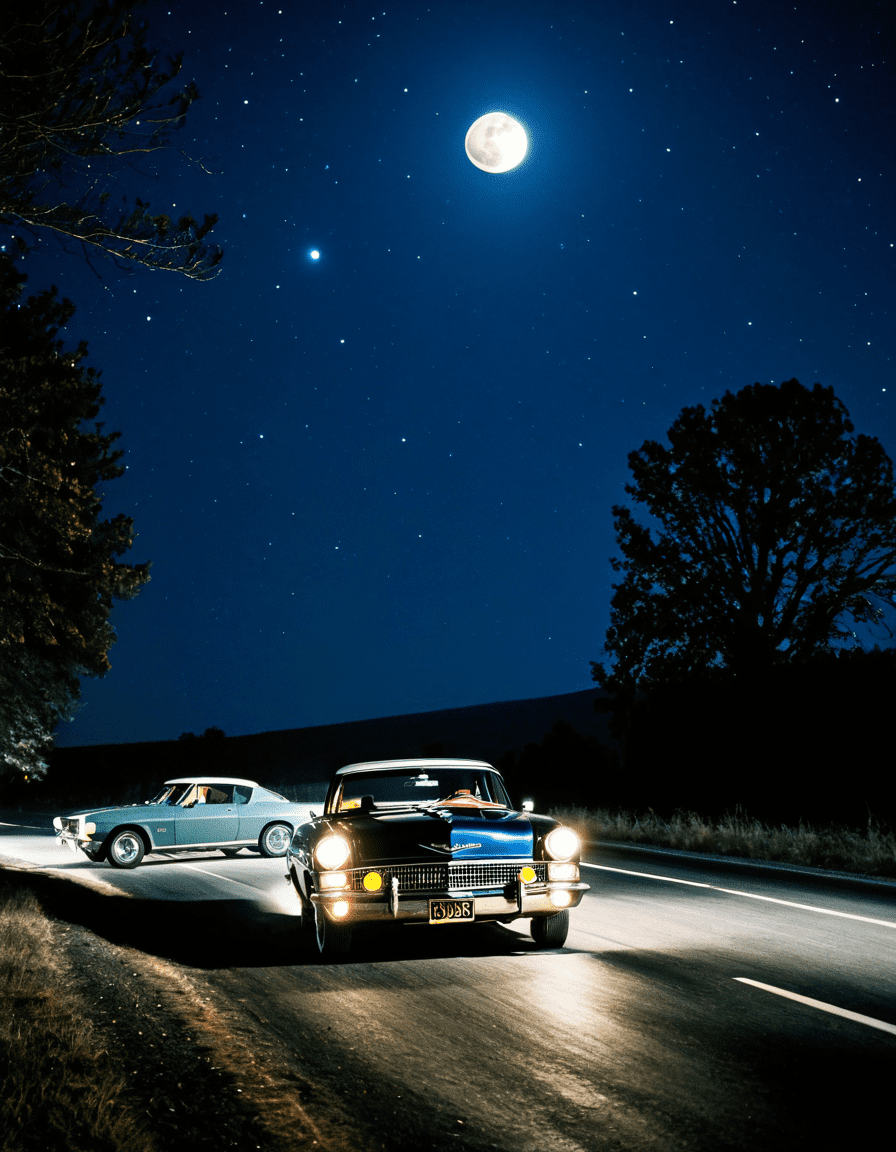In the glittering cosmos of cinema, crime thrillers stand apart, often blurring the lines between reality and fiction. The term “snatch” has taken on diverse connotations over the years. Whether it’s the adrenaline-pumping chase for stolen treasures, the nuanced dance of betrayal, or the exploration of moral decay, the narratives surrounding crime offer entertainment while deftly critiquing societal issues. This article delves into the gritty underbelly of crime in film, illuminating influential works that have shaped the genre’s landscape.

Top 7 Films that Snatch Attention and Redefine Crime Genre
Directed by Guy Ritchie, this bombastic cult classic is a benchmark of the genre. Offering sharp storytelling, “Snatch” intertwines the fates of a motley crew of small-time crooks, a boxing promoter, and a band of stolen diamonds against a chaotic London backdrop. The film’s ingenious narrative structure captivates, showcasing how various threads converge on themes of greed and deceit, snatching viewers’ attention with its snappy dialogue and frenetic editing.
Quentin Tarantino’s iconic film isn’t just a cinematic masterpiece; it revolutionized crime storytelling. Its nonlinear narrative and unforgettable characters, like Vincent Vega and Mia Wallace, showcase Tarantino’s ability to snatch and stitch together disparate tales, crafting a tapestry that’s both cohesive and engaging. Through razor-sharp dialogue laced with humor and violence, this film delves into the chaotic elements of criminal life while reshaping audience expectations.
Francis Ford Coppola’s epic saga about the Corleone family transcended the conventional gangster film. It intimately portrays familial loyalty amid the backdrop of organized crime, snatching attention from typical tropes to explore the moral complexities of power and corruption. The film’s lasting legacy has not only spawned sequels but has also influenced generations of filmmakers keen on digging deeper into character-driven narratives.
Directed by Michael Mann, this film presents an unforgettable face-off between two titans of cinema, Al Pacino and Robert De Niro. The plot dives deep into the lives of a master thief and an LAPD detective, snatching viewers away from mere heist excitement to the emotional stakes that bind both characters. With its meticulously crafted action sequences, “Heat” redefined what it means to merge crime with complex character studies.
This gritty drama, directed by Ben Affleck, tackles tough moral questions through the lens of a missing child’s case. It snatches viewers’ emotions, compelling them to confront ethical dilemmas as the story unfolds, exploring the gray areas of justice and morality. Its success highlights how crime narratives can delve beyond surface-level thrills, sparking conversations about deeper societal issues.
Danny Boyle’s daring adaptation presents a raw view of heroin addiction in Edinburgh, snatching any romanticized notions of drug culture. The film starkly illustrates the chaos that accompanies addiction, presenting a sobering reality shaped by urban life, friendship, and despair. Its exceptional imagery and revolutionary soundtrack have left an indelible mark on both crime and indie films alike.
The Coen Brothers’ film diverges from typical crime storytelling to explore darker, existential themes. By showcasing the randomness of violence, it snatches audiences’ preconceived notions about justice and morality. The character of Anton Chigurh, a chilling embodiment of chaos, reminds viewers that unpredictability often governs lives, making this film a profound commentary on human nature.

The Cultural Impact of Snatch Narratives in Cinema
Crime films often serve as mirrors reflecting societal anxieties and sparking conversations about justice, morality, and the human experience. As audiences get snatched away into these narratives, they find themselves grappling with big questions regarding systemic issues—think poverty, inequality, and corruption. This is where the power of these films lies; they allow viewers to empathize with characters who might otherwise be dismissed as mere criminals.
The evolution of storytelling in crime films marks a significant shift from glamorized depictions of law-breaking to wresting with the often brutal reality of consequences. What was once merely about adventure is now about emotionally charged complexities, viewing criminal acts through a psychological lens. A prime example is “Prisoners” (2013), a film that adeptly snatches viewers into its morally ambiguous narrative, challenging our understanding of what’s right and wrong.
Evolution in Storytelling: From Action to Psychological Depth
Modern crime films continuously dig deeper, with filmmakers exploring the psychological ramifications on both the criminals and victims. Today’s stories aim to snatch emotions, creating multi-dimensional characters that often reflect conflicting desires and fears. As filmmakers tap into these intricate levels, we witness a more profound examination of the human condition—a shift that elevates the genre and resonates with diverse audiences.
The Future of Crime in Cinema
As society keeps grappling with crime and its complexities, the film industry stands poised on the brink of a transformative shift. With the increasing influence of streaming platforms, diverse voices and stories are more accessible than ever. The opportunity to snatch and showcase untold tales related to various cultures is ripe; the future of crime cinema promises to shine a light on the chaos that often goes unnoticed.
Innovators in film are starting to redefine the genre, infusing narratives with authenticity and depth. From exploring systemic injustice to personal dilemmas, filmmakers are using crime as a backdrop to illuminate important societal issues. Much like the riveting plot of Luck, which intertwines chaos and redemption, the upcoming years might usher in an era where crime films become platforms for nuanced discussions.
In wrapping up, the art of the crime thriller remains a captivating genre that offers reflections of society both thrilling and thought-provoking. Through innovative storytelling, filmmakers snatch viewers’ attention and challenge them to confront the chaos outside their screens. The enthralling underworld of crime and chaos isn’t going anywhere—it’s about time we seized this cinematic landscape for an adventure unlike any other.
Snatch: The Thrilling Underworld of Crime and Chaos
Fun Facts That’ll Make You Go “Wow!”
Did you know that “Snatch,” directed by Guy Ritchie, is famous not just for its fast-paced plot but also for its star-studded cast? Among them is Jason Statham, who plays a ruthless boxing promoter. Fun fact: Statham almost didn’t get cast because of a lack of acting experience! Talk about an unexpected twist, right? Moreover, the film touches on important psychological themes, subtly hinting at issues like mental health. If you’re curious about related topics, check out What are Signs Of depression; it’s a vital conversation starter in many circles today.
Transitioning from casting to aesthetics, the film’s visual style is as edgy as its storyline. Ritchie’s unique approach marries humor with chaos, so much so that the setting feels alive. The London underbelly where the stolen diamond plot unfolds is so gritty that it might remind you of a beat from a classic film like Nightingale, which dives deep into personal narratives. Also, ever notice how quirky props can create memorable moments? Think about the infamous Floaties used in a scene that shows just how bizarre the underworld can get!
Behind the Scenes Insights
Interestingly, filming “Snatch” wasn’t all fun and games. The crew faced challenges, including time constraints and weather conditions. But one thing they had right was teamwork. Actors like Mark Duplass, who later found his stride in indie films, shared the camaraderie of the set. When cast members support one another, it helps create that explosiveness on-screen. Speaking of support, hold onto your hats, because there’s a scene inspired by a true story that connects to a well-known case titled Found Mary. This real-life element adds layers to the script, giving viewers a taste of authenticity amidst the chaos.
Finally, it’s easy to see why “Snatch” has become iconic, especially with its tightly woven narrative and unexpected plot points. Much like Kacchan from My Hero Academia, who represents determination and growth, the characters in “Snatch” face their own battles that speak to larger themes of ambition and destiny. That chaotic crime world isn’t just about what’s stolen – it’s about what’s gained in life’s tough game. So next time you reflect on the film, remember that every detail, from the characters to the plot twists, adds to its richness, making it a classic worth revisiting.





